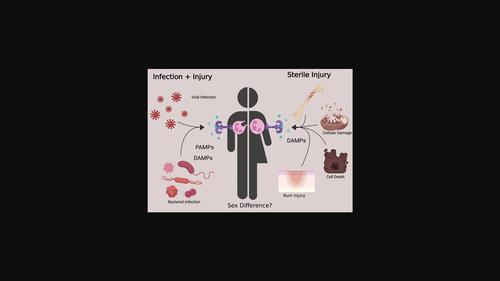From infection to repair: Understanding the workings of our innate immune cells.
IF 4.9
3区 医学
Q2 MEDICINE, RESEARCH & EXPERIMENTAL
引用次数: 1
Abstract
In a world filled with microbes, some posing a threat to our body, our immune system is key to living a healthy life. The innate immune system is made of various cell types that act to guard our bodies. Unlike the adaptive immune system that has a specific response, our innate immune system encompasses cells that elicit unspecific immune responses, triggered whenever the right signals are detected. Our understanding of immunity started with the concept of our immune system only responding to "nonself" like the pathogens that invade our body. However, over the past few decades, we have learned that the immune system is more than an on/off switch that recognizes nonself. The innate immune system regularly patrols our bodies for pathogens and tissue damage. Our innate immune system not only seeks to resolve infection but also repair tissue injury, through phagocytosing debris and initiating the release of growth factors. Recently, we are starting to see that it is not just recognizing danger, our innate immune system plays a crucial role in repair. Innate immune cells phenotypically change during repair. In the context of severe injury or trauma, our innate immune system is modified quite drastically to help repair, resulting in reduced infection control. Moreover, these changes in immune cell function can be modified by sex as a biological variable. From past to present, in this overview, we provide a summary of the innate immune cells and pathways in infection and tissue repair. This article is categorized under: Immune System Diseases > Molecular and Cellular Physiology.

从感染到修复:了解我们先天免疫细胞的工作原理。
在一个充满微生物的世界里,有些微生物对我们的身体构成威胁,我们的免疫系统是健康生活的关键。先天免疫系统是由各种类型的细胞组成的,它们起着保护我们身体的作用。与具有特定反应的适应性免疫系统不同,我们的先天免疫系统包含引发非特异性免疫反应的细胞,只要检测到正确的信号,就会触发这些反应。我们对免疫的理解始于我们的免疫系统只对入侵我们身体的病原体等“非自我”做出反应的概念。然而,在过去的几十年里,我们已经了解到免疫系统不仅仅是一个识别非自我的开关。先天免疫系统定期巡逻我们的身体,寻找病原体和组织损伤。我们的先天免疫系统不仅寻求解决感染,还通过吞噬碎片和启动生长因子的释放来修复组织损伤。最近,我们开始看到,这不仅仅是识别危险,我们的先天免疫系统在修复中发挥着至关重要的作用。先天免疫细胞在修复过程中发生表型变化。在严重损伤或创伤的情况下,我们的先天免疫系统会发生很大的变化,以帮助修复,从而降低感染控制。此外,免疫细胞功能的这些变化可以通过性别作为一个生物学变量来改变。从过去到现在,在这篇综述中,我们总结了先天免疫细胞以及感染和组织修复的途径。本文分类在:免疫系统疾病>分子和细胞生理学。
本文章由计算机程序翻译,如有差异,请以英文原文为准。
求助全文
约1分钟内获得全文
求助全文
来源期刊

WIREs Mechanisms of Disease
MEDICINE, RESEARCH & EXPERIMENTAL-
CiteScore
11.40
自引率
0.00%
发文量
45
 求助内容:
求助内容: 应助结果提醒方式:
应助结果提醒方式:


